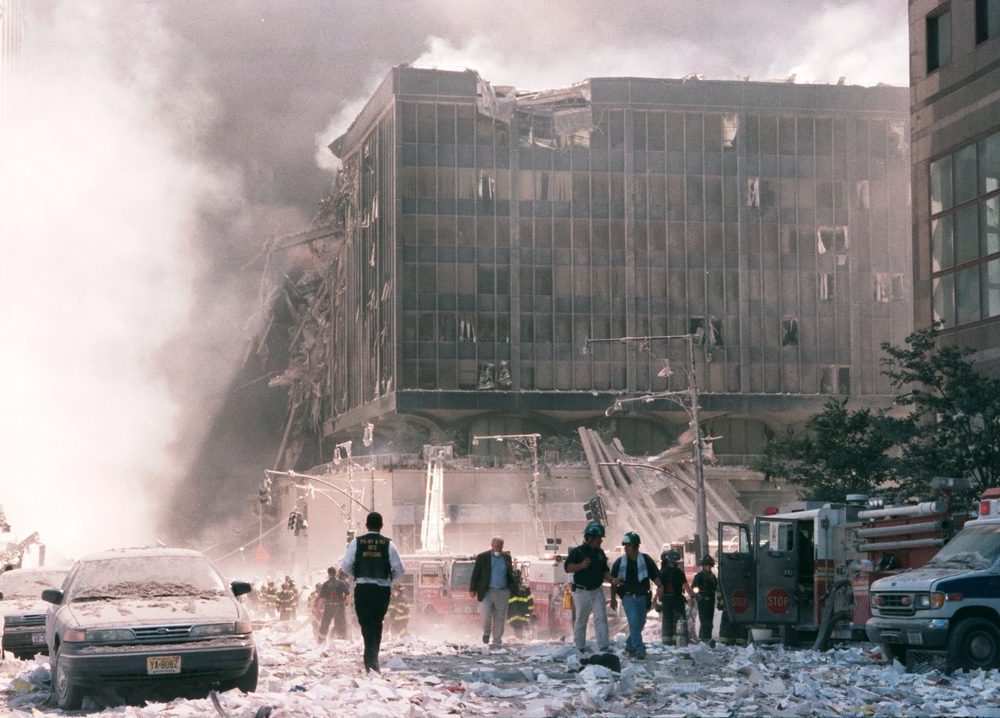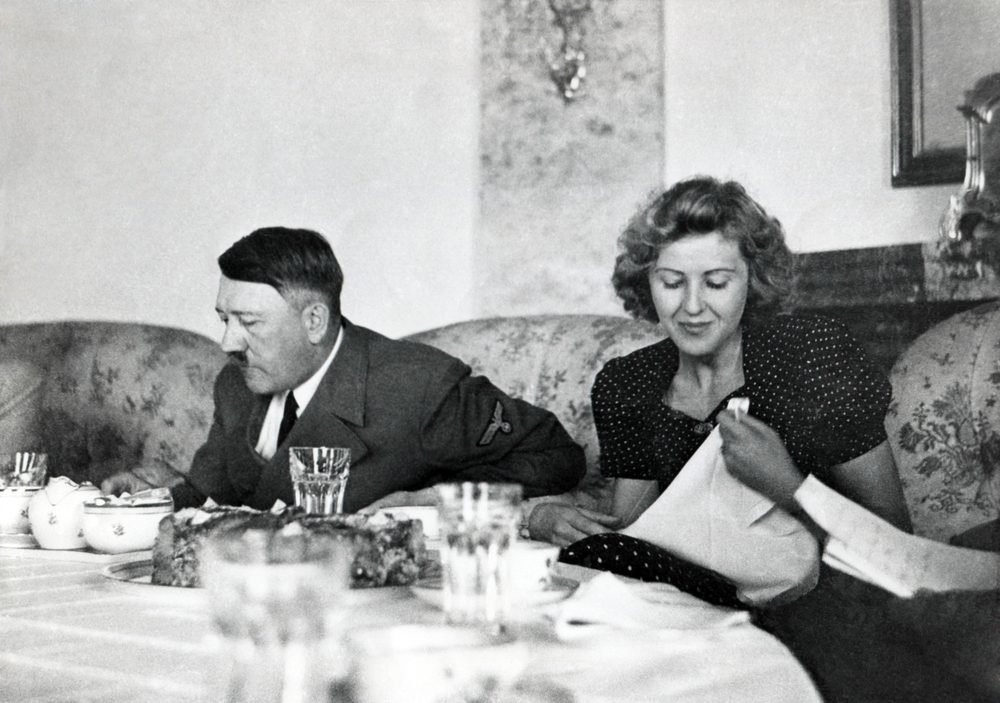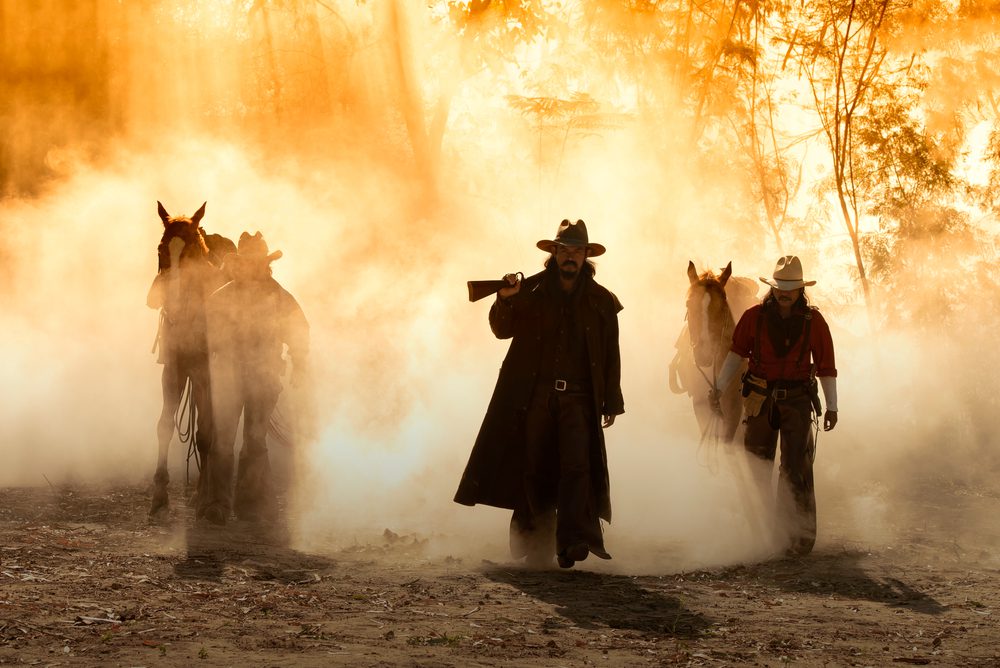The 9/11 terrorist attacks on the World Trade Center were deadly and swift. The first tower was struck at 8:46 AM, followed by the second at 9:03 AM. Both had turned into debris less than two hours later.
According to reports, sixty businesses with offices at the World Trade Center lost employees on 9/11; 614 people died in the south tower, and 1,402 in the north tower. Cantor Fitzgerald lost the most employees than any other company — 658.
Two decades later, we’re reminded of that day’s tragedy. Four hijacked planes. The Pentagon burst into flames. Nearly 3,000 innocent people lost their lives in building collapses, plane crashes, and frantic leaps from burning buildings.
Still, such catastrophic events often have a few who stand out as survivors. Here are 7 incredible stories of people who survived 9/11.

1. Ron DiFrancesco
We’ve never had a building that huge completely collapse, so most people assumed they had significantly more time to evacuate than the 56 minutes between aircraft impact and implosion.
As Ron DiFrancesco headed toward the South Tower’s ground level, he thought the worst was over. Half an hour before, he and the Euro Brokers executive were in DiFrancesco’s 84th Floor office when the second aircraft slammed into the building. The plane’s fuselage and cabin struck below him while the right wing cut through the floor directly above.
DiFrancesco couldn’t descend or ascend without smoke and flames. He ultimately plowed through intense heat until he heard a voice. It was a firefighter who helped him get out of the impact zone. The last thing he saw was a huge fireball before blacking out.
He woke up in a hospital bed with his contact lenses melted in his eyes and burns over most of his body. He is the last person known to leave the South Tower following the 9/11 attacks.
2. Joseph Lott
The events of 9/11 had Joseph Lott — who was staying at the Mariott Hotel — sandwiched between the Twin Towers of the World Trade Center. Lott was a sales representative with Compaq Computers at the time, and he was about to participate in a presentation held scheduled that day at Windows on the World, the famous dining and meeting venue on the North Tower’s uppermost floors.
Little did he know that his weird affinity for “art ties” would spare his life. When Lott arrived at the hotel lobby, one of his colleagues, Elaine Greenberg, had a surprise for him: a Monet tie.
He liked it so much that he wanted to wear it at the conference. But Greenberg’s sense of style saved Lott’s life: “Not with that shirt though. You’re not going to wear a blue and red tie with a green shirt.”
After breakfast, Lott went to his hotel room to change his shirt, while Greenberg went to Windows on the World. He was leaving his room when the first 9/11 attack occurred. Thanks to his lucky tie, Lott was among the first to leave the North Tower building. Everyone at Windows on the World — including Greenberg — lost their lives that day.
3. Jan Demczur & Five Others
The Twin Towers had a total of 198 elevators. On 9/11, about 200 people died in or near those elevators. Some burned as flames rushed down shafts; others plunged to their deaths after the hijacked planes destroyed lift cables. And there were also people who died in stalled elevators when the buildings collapsed.
On the morning of 9/11, window washer Jan Demczur was heading toward the North Tower’s 44th Floor Sky Lobby to ride an elevator up to floors 67-74. He was in the elevator with five others — John Paczkowski, Shivam Iyer, Colin Richardson, George Phoenix, and another man whose identity is still unknown — when American Airlines Flight 11 hit the building.
The elevator trembled violently, then stopped. Right after the crash, they thought they’d better figure out how to get out on their own. They managed to find their way out through the ceiling hatch to discover they were between express landings. There was no exit, just a wall. Demczur stroke his fists against it. Sheetrock. Were it concrete, they were dead.
They only had one tool: Demczur’s squeegee handle. They shaved away a few inches and crawled out into a bathroom. The six men were out of the building at 10:23 AM — five minutes before the collapse.

4. Steve Scheibner
For the 9/11 tragic events, Steve Scheibner had already been with American Airlines for a decade; prior to that, he was a Navy pilot. He was the type of man you’d want to have in charge of the aircraft if you were boarding a cross-country flight.
On September 10th, 2001, Scheibner logged into the pilot registration system to take over his next assignment. He noticed only one assignment was available for the following day: an early-morning flight from Boston to LA. A few clicks here and there, and he got the open slot.
According to American Airlines’ system rules, once an assignment is claimed, a pilot with more tenure has 30 minutes to override it. That’s exactly what happened to Scheibner’s assignment: a colleague with seniority, Tom McGuiness, took Scheibner’s spot.
The next morning, both McGuinness and co-pilot John Ogonowski were the first two victims of 9/11.
5. Elise O’Kane
United Airlines, like American Airlines, also used a computer-based assignment request system. Since schedules were normally set a month beforehand, in August, flight attendant Elise O’Kane logged into the system to register for her usual flight from Boston to LA.
Unfortunately (but luckily, following the 9/11 events), she inverted two code numbers by mistake, resulting in an unintended schedule. O’Kane tried to switch flights with other colleagues, but without result, as the system froze when she logged into it to request that flight.
On September 11th, American Airlines Flight 11, the one that O’Kane desperately wanted to board, crashed into the Word Trade Center’s North Tower. She promptly switched jobs, ultimately becoming a nurse.

6. Ling Young
There were about 200 people in the South Tower’s 78th Floor Sky Lobby when, at exactly 9:03 AM, United Airlines Flight 175 ripped through it. Only a few people survived the 9/11 attack, and Ling Young was one of them. “I was launched from one side of the floor to the other side,” he recalls.
“I had to push things off me to get up. My glasses were covered with blood, so I couldn’t see… I looked around, and everyone was lying there, not moving.” She had deep burns, whose pain was reduced only by shock. Then, she heard someone’s voice: “I found the stairs. Follow me.”
It was a young man who was carrying another woman over his left shoulder. Young also remembers he was wearing a red bandana. The three of them got to the 61st floor, where their paths diverged. The man put down the woman he was carrying and told them both to keep descending. He went back upstairs, and nobody saw him again.
For months after 9/11, the unidentified man became known as the Man in the Red Bandana until his real name became known. He was Welles Crowther, a 24-year-old equities trader at Sandler O’Neil and Partners.
7. Josephine Harris
An entire team of firefighters who intervened following the 9/11 attacks see Josephine Harris as their guardian angel. After the first plane hit the North Tower building, Harris, a Port Authority bookkeeper, helped people evacuate the 73rd Floor office.
She did all of that while having an injured leg from a previous car accident, making progress painful and slow. Meanwhile, Ladder Company Captain Jay Jonas and his team were on the 27th Floor office when they felt an earth-shattering boom. The crew went down seven flights of stairs running right into Josephine Harris.
They couldn’t abandon her. The whole process of descending slowed to one difficult step at a time. Harris was in so much pain that she told the firefighters to go on without her and save themselves. They all were on the 4th Floor.
They instantly refused and decided to wait a few seconds until she regained some straight. That’s when the rumbling returned, but this time from directly overhead. The upper floors were collapsing above them.
They covered while praying for the booms to stop. And then they stopped. It was part mathematics, part miracle. The debris from a shattered 110-story building reached four stories, and the central location of the staircase left pockets of life for those trying to escape.
None from above got out. It was simply freak timing. “God gave us the courage and strength to save her; by doing so, we were also saving ourselves,” declared Jonas after the 9/11 events.
The 9/11 Memorial & Museum tells the story of this tragic event through narratives, media, and a collection of authentic artifacts. Don’t hesitate to visit it if you have the chance.
You may also like: 8 Facts About Kennedy’s Assassination.






One Response
Two of my best friends were on the plane that crashed into the south tower.